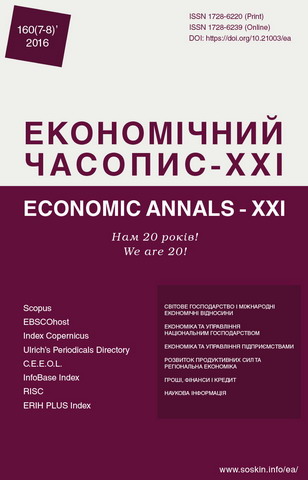Portfolio optimization using the GO-GARCH model: evidence from Ukrainian Stock Exchange
Portfolio optimization using the GO-GARCH model: evidence from Ukrainian Stock Exchange
Author(s): Zoriana Matsuk, Fitim Deari, Valeriya LakshinaSubject(s): Economy
Published by: Institute of Society Transformation
Keywords: Portfolio; GO-GARCH Model; Return; Risk; Optimizations; Stock Exchange; Portfolio
Summary/Abstract: This paper provides an experimental study on optimal portfolio composition. Data on seven stocks, included in Ukrainian Exchange Index, for the period from January to December 2015 are considered. In total, seven big industrial, electric and military companies are selected from the Ukrainian Exchange: Avdiivka Coke Plant, PJSC; Azovstal Iron and Steel Works, PJSC; Raiffeisen Bank Aval, JSC; Centerenergo, PJSC; Donbasenergo, PJSC; Motor Sich, JSC; and Ukrnafta, OPJC. The sample amounts to 226 observations. The analysis covers descriptive statistics, correlation, and, finally, optimal investment weights, which are calculated using Sharpe ratio. Covariance matrix of returns is estimated by means of generalized orthogonal GARCH model with Gaussian and normalinverse Gaussian distributions for errors. Selected stocks during the considered period have on average negative rates of returns. At the same time, these stocks in most of cases are positively correlated with each other, leading hence to a fewer room for the efficient diversification. Both Gaussian and normal-inverse Gaussian portfolios preclude that on average investment weights one should be focused mainly on Centerenergo and Motor Sich stocks. Based on these results, the investor should buy 46% of Centerenergo’s stocks and 34% of Motor Sich’s stocks. Selected stocks during the considered period have on average negative rates of returns. At the same time, these stocks in most of cases are positively correlated with each other, leading hence to a fewer room for the efficient diversification. Despite this, our results denoted that implementation of multivariate GARCH together with normal-inverse Gaussian distribution for errors enables to reduce the portfolio risk substantially. Comparing optimal GO-GARCH portfolios with naїve portfolio with all weights equal and Ukrainian Exchange Index we demonstrate that the former provide smaller portfolio variance and better VaR than naїve portfolio and the Index.
Journal: Економічний часопис - ХХІ
- Issue Year: 160/2016
- Issue No: 07+08
- Page Range: 116-120
- Page Count: 5
- Language: English

